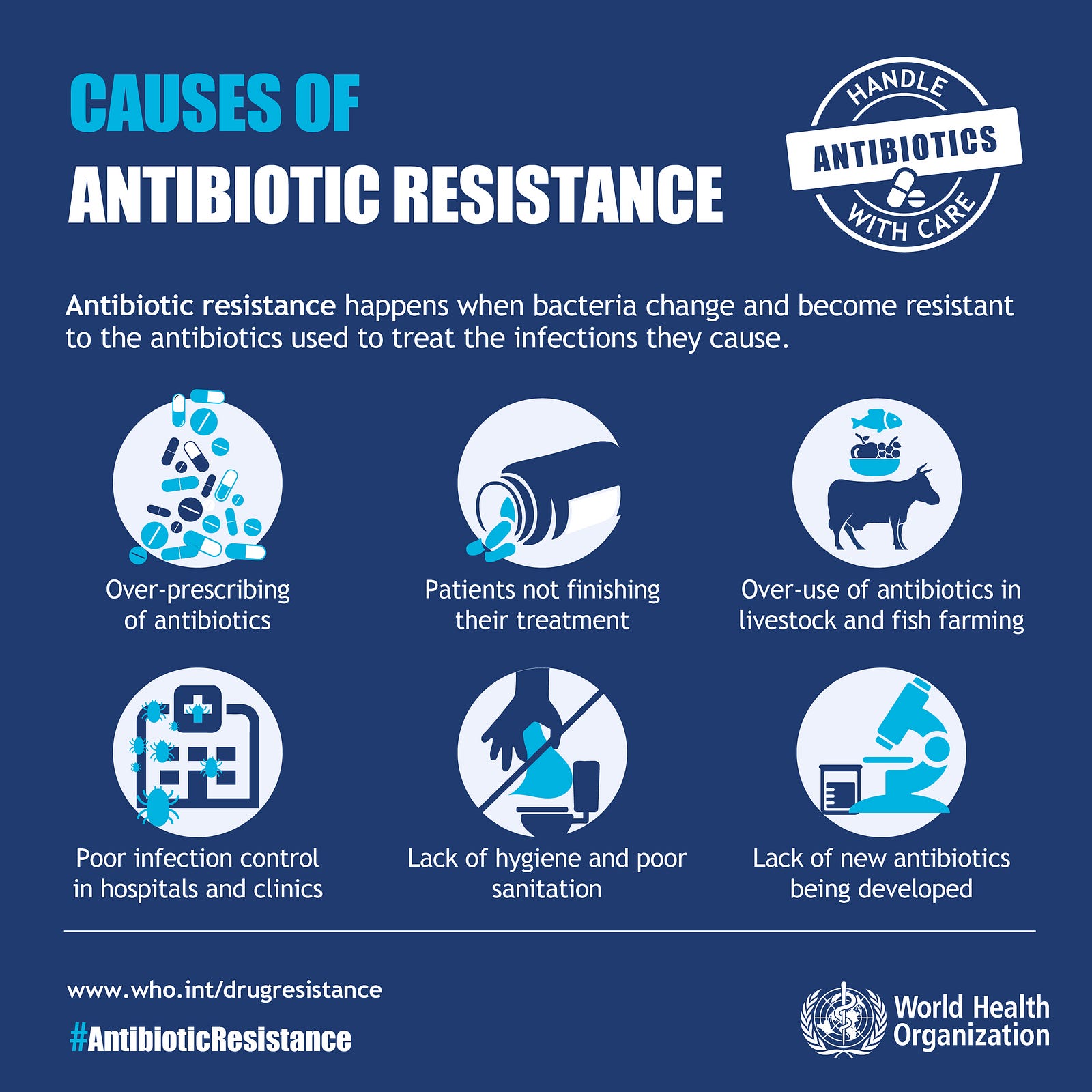
“Antimicrobial Resistance – Mutation.” National Institute of Allergy and Infectious Diseases, Feb. 2009, www.niaid.nih.gov/topics/antimicrobialResistance/Understanding/Pages/mutation.aspx.
The development of antibiotic-resistant bacteria is a growing concern that is quickly sweeping up the attention of medicinal chemists and doctors. The growing use of antibiotics as the standard for treatment has led to the increase of drug-resistant bacteria; commonly known as “superbugs.” As the drug is repeatedly introduced to the bacteria, eventually mutations will arise in future generations of bacterium¹ that will allow it to be antibiotic-resistant and allow it to multiply and thrive. This increased number of antibiotic-resistant bacteria has led to an increase in sick patients² with bacterial infections that are antibiotic-resistant. As before due to the trivial nature of the infection simple antibiotics would cure the infection, but as per the nature of these “superbugs”, common treatments won’t work anymore, and new drugs or different treatments must be used to cure the infection.

“Causes of Antibiotic Resistance .” World Health Organization, Nov. 2015, www.who.int/drugresistance.
There are many causes to the antibiotic crisis, but one of the more prevalent causes are the over-prescribing of antibiotics and the over-use of antibiotics in livestock and fish farming. Currently, more than 50% of the antibiotics produced are going directly to the feeds of livestock³to keep them from getting sick due to their poor living conditions. By introducing bacteria to a consistent and high volume of antibiotics, eventually, the bacteria will go through mutations in future generations that will allow it to survive these antibiotics and ultimately result in the discontinued effectiveness of that drug. The same concept applies to the over-prescribing of antibiotics, by always introducing the bacteria to the drug eventually it will not be practical to use anymore4. At that point, different drugs would need to be used until they eventually stop working and so on until we reach a point where there would be no more antibiotics left to use to fight these infections.
What causes antibiotic resistance? – Kevin Wu. https://www.youtube.com/watch?v=znnp-Ivj2ek (accessed Feb 16, 2019).
Potential solutions to combat the problem involve something as trivial as proper hygiene. As making sure to wash your hands often, the chance for infection will go down and as a direct result will cut down on antibiotic use. A more futureproof method would be the development of new antibiotics5 or potential re-use of old antibiotics6 that could be re-purposed to combat the problem. No matter the method used to combat this problem or a combination of every method available, this a problem that needs to be addressed as soon as possible, or we are looking at a world where trivial infections can run rampant with no good method of treatment.
~ Danial Yazdan
References:
¹Blair, Jessica M. A., et al. “Molecular Mechanisms of Antibiotic Resistance.” Nature Reviews Microbiology, vol. 13, no. 1, 2014, pp. 42–51., doi:10.1038/nrmicro3380.
²Duin, David Van, and David L. Paterson. “Multidrug-Resistant Bacteria in the Community.” Infectious Disease Clinics of North America, vol. 30, no. 2, June 2016, pp. 377–390., doi:10.1016/j.idc.2016.02.004.
³Bush, Karen, et al. “Tackling Antibiotic Resistance.” Nature Reviews Microbiology, vol. 9, 2 Nov. 2011, pp. 894–896., doi:10.1038/nrmicro2693.
4Chellat, Mathieu F., et al. “ChemInform Abstract: Targeting Antibiotic Resistance.” ChemInform, vol. 47, no. 29, 22 Mar. 2016, pp. 6600–6626., doi:10.1002/chin.201629282.
5Nathan, Carl, and Otto Cars. “Antibiotic Resistance — Problems, Progress, and Prospects.” New England Journal of Medicine, vol. 371, no. 19, 2014, pp. 1761–1763., doi:10.1056/nejmp1408040.
6Frieri, Marianne, et al. “Antibiotic Resistance.” Journal of Infection and Public Health, vol. 10, no. 4, 2017, pp. 369–378., doi:10.1016/j.jiph.2016.08.007.
